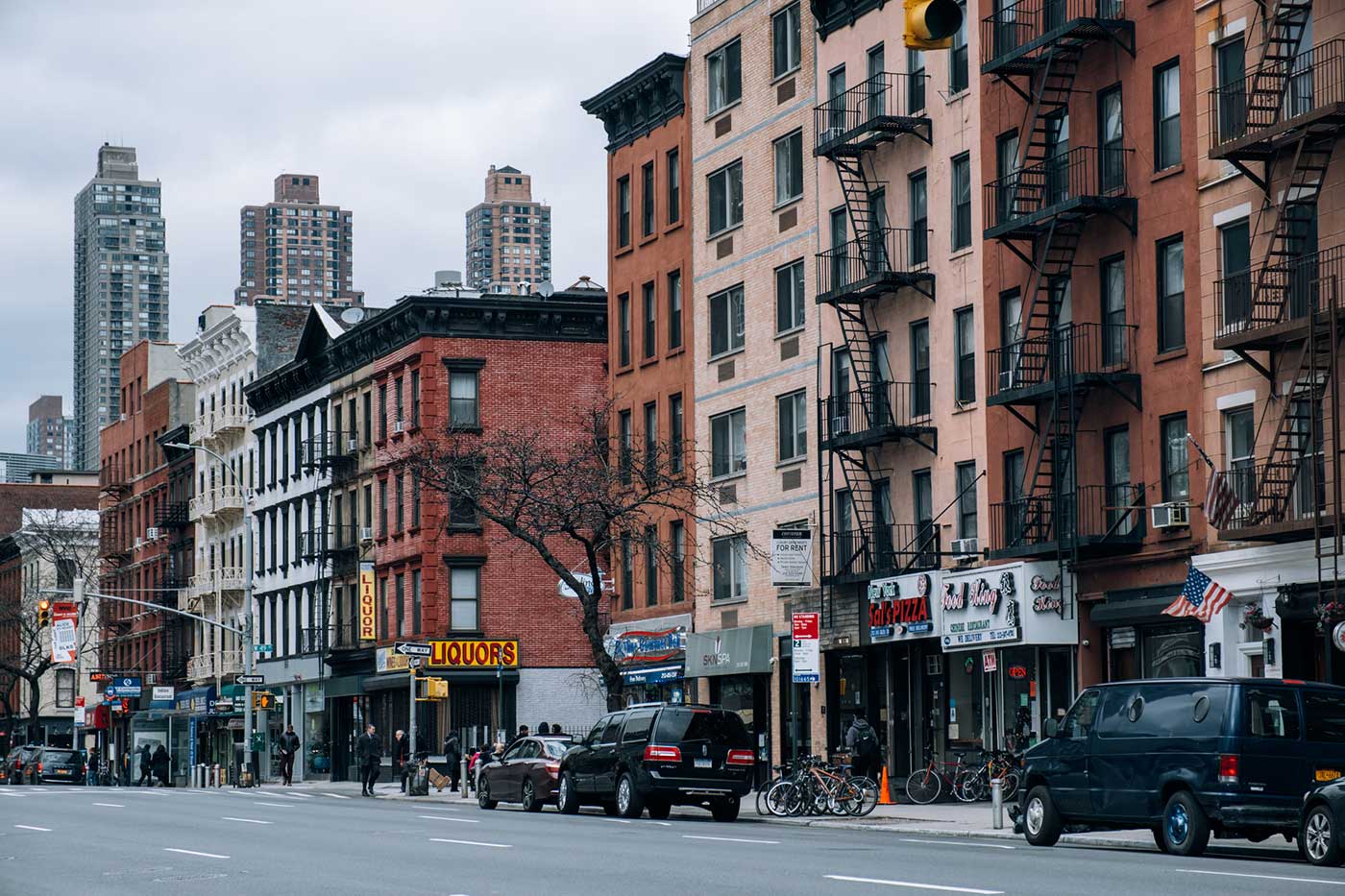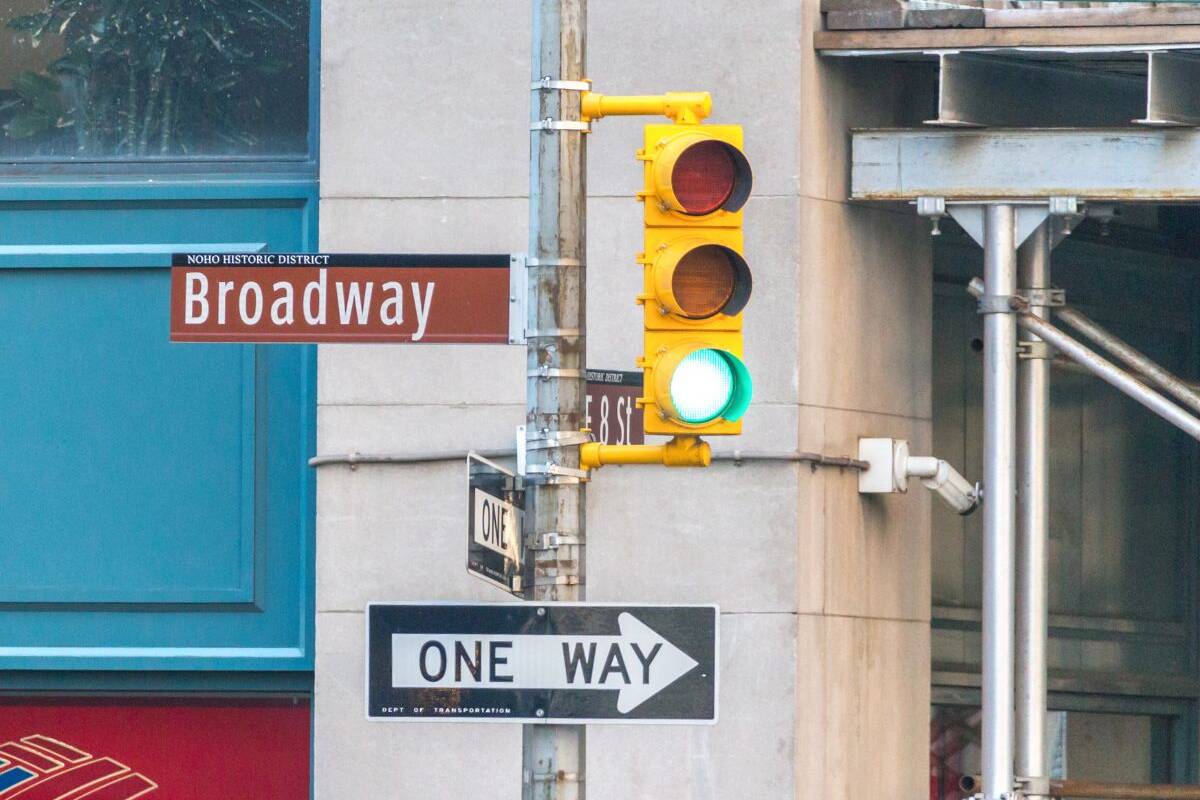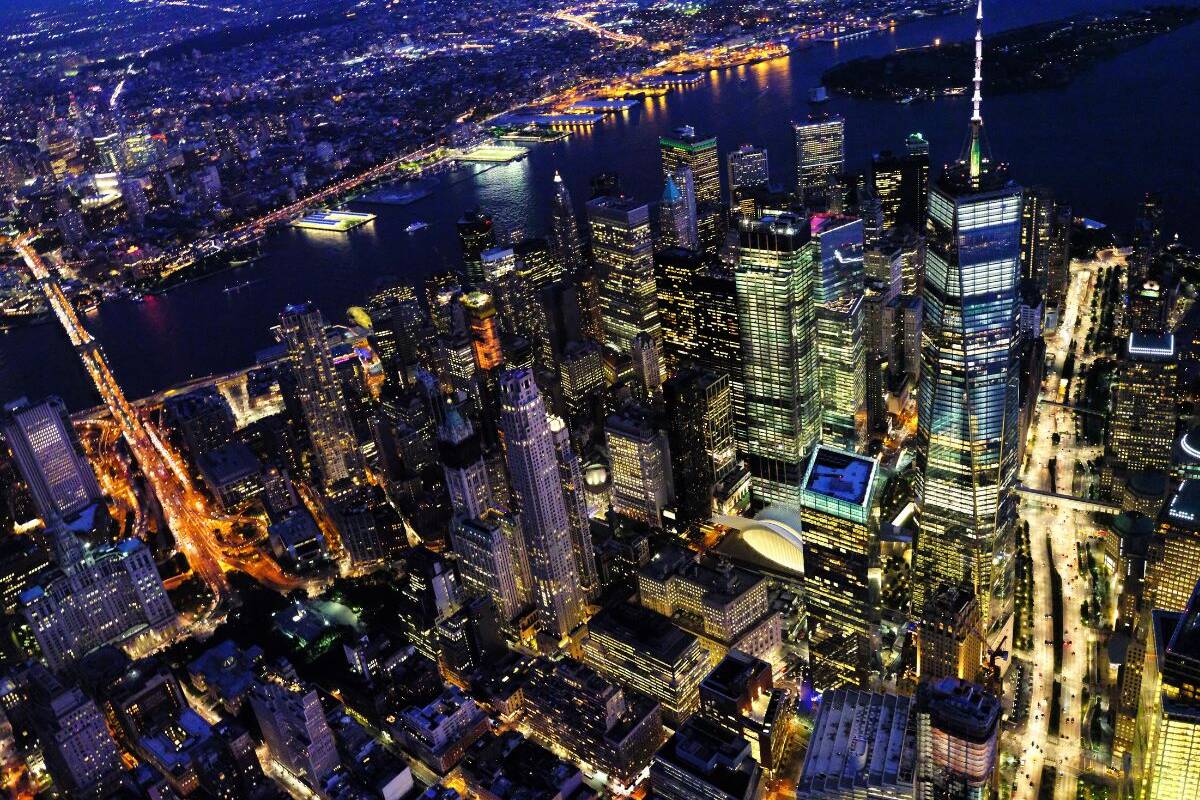Table of Contents
The Flatiron Building is easily one of the most recognizable landmarks in New York City. For over a century, this iconic structure has captured the attention of locals and visitors alike with its unique triangular shape and impressive architecture.
Whether you’re a history buff, an architecture enthusiast, or simply curious about one of New York City’s most iconic structures, this article has something for you. So, let’s uncover the secrets of the Flatiron Building together and gain a deeper appreciation for this remarkable piece of the city’s architectural heritage.
History
The Flatiron Building stands proudly at the intersection of Fifth Avenue, Broadway, and 23rd Street in Manhattan. Before this architectural marvel was erected, the site was home to a few other notable buildings. The St. Germain Hotel, built in the mid-19th century, once occupied the southern end of the lot. Amos Eno, a successful real estate investor, purchased the entire block in 1857 and later replaced the hotel with a seven-story apartment building called the Cumberland.
Design and Construction
In 1901, the Fuller Company, a Chicago-based construction firm, acquired the site from the Newhouse family. They hired architect Daniel Burnham, along with his assistant Frederick P. Dinkelberg, to design a new headquarters for their company. Burnham, a pioneer of the Chicago School architecture movement, envisioned a 22-story steel-framed building with a Beaux-Arts style facade.
The Flatiron Building’s unique triangular shape was a result of Burnham’s clever design, which maximized the use of the oddly shaped lot. This innovative approach allowed the building to soar 285 feet (86.9 meters) tall, making it one of the tallest buildings in New York City at the time of its completion in 1902.
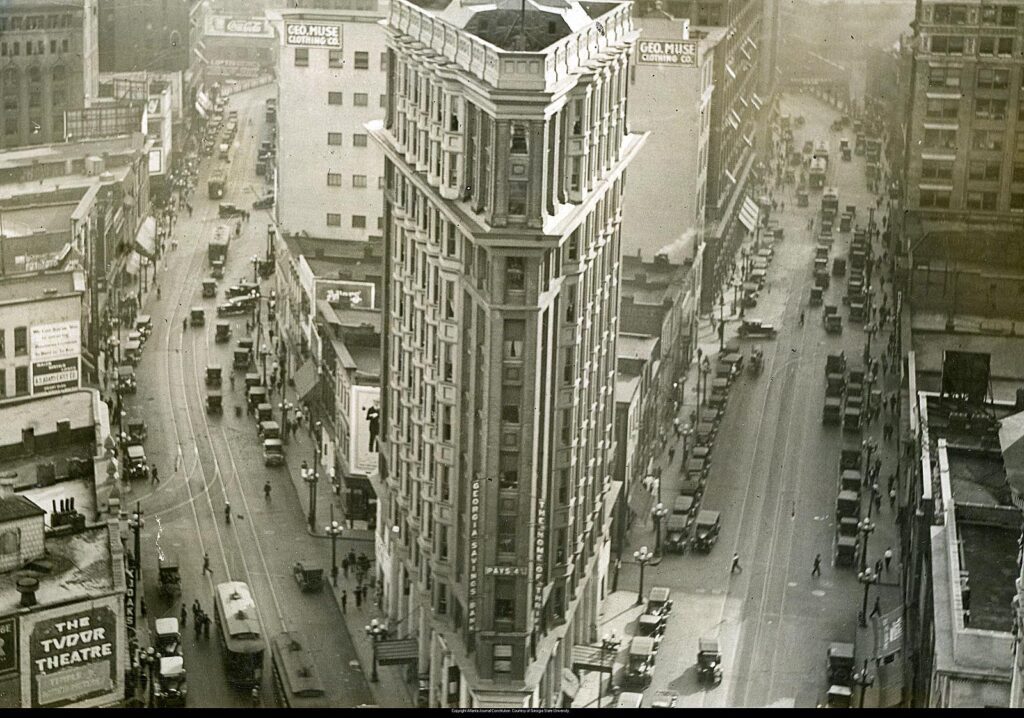
Opening and Early Years (1902-1925)
When the Flatiron Building first opened its doors, it was originally known as the Fuller Building. The Fuller Company occupied the 19th floor, while the rest of the building was leased out to various tenants. The public’s reaction to the building was mixed, with some praising its innovative design and others criticizing its unusual shape. The New York Tribune called it “a stingy piece of pie” and “the greatest inanimate troublemaker in New York.”
Despite the initial criticism, the Flatiron Building quickly became a cultural icon and a popular subject for photographers and artists alike. Alfred Stieglitz and Edward Steichen captured the building’s essence in their photographs, while artists like John Sloan and Childe Hassam immortalized it on canvas.
Recent History (2000-present)
In 1997, Newmark & Company took over as the managing agent for the Flatiron Building, replacing Helmsley-Spear. Under Newmark’s management, the building underwent significant improvements, such as installing new electric elevators and upgrading the antiquated elevator cabs.
The early 2000s saw a surge in interest from publishing companies, with Macmillan and its imprints occupying a significant portion of the building. In 2019, the Flatiron Building’s owners embarked on a major renovation project, aiming to upgrade the interior while preserving its historical integrity. This ongoing effort includes installing a central air and heating system, updating the sprinkler system, and renovating the lobby.
Architecture and Design
Exterior
The Flatiron Building’s facade is a stunning example of Beaux-Arts architecture, which combines French and Italian Renaissance influences. The exterior is divided into three distinct sections: a limestone base, a glazed terracotta shaft, and a capital adorned with decorative elements.
The three-story base features storefronts and entrances flanked by columns and topped with an ornate cornice. The upper stories are clad in glazed terracotta, which provides a textured appearance and helps unify the overall design. Decorative cornices, moldings, and oriel windows add depth and visual interest to the facade.
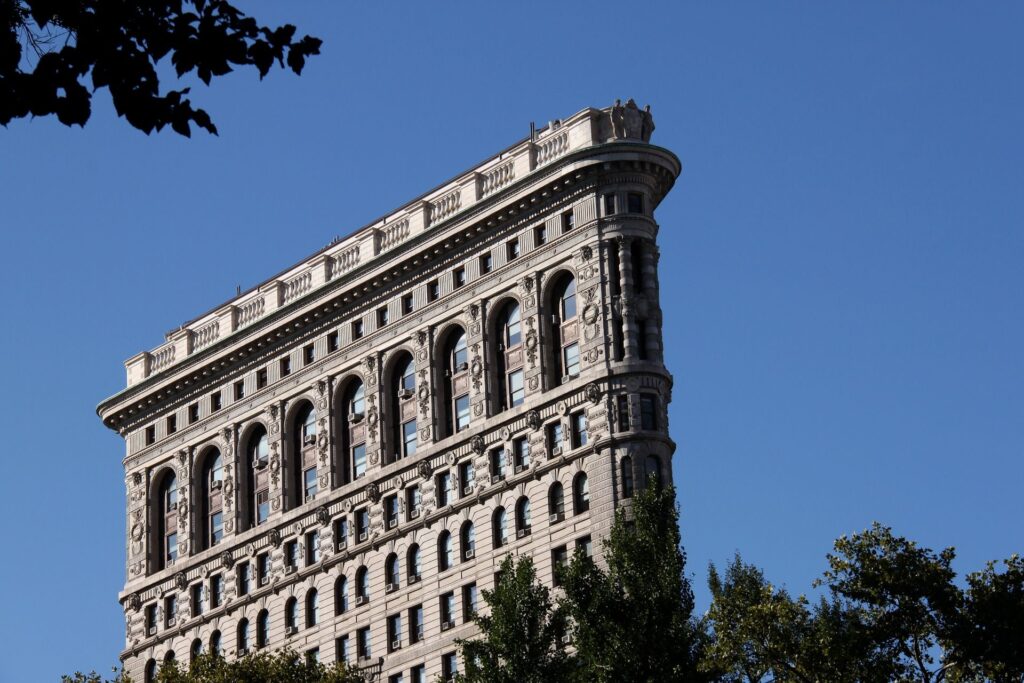
Interior
Inside the Flatiron Building, a steel skeleton provides structural support for the 22 stories. The interior layout has evolved over time, with renovations and modernizations adapting to the needs of various tenants. The building’s triangular shape has resulted in unique, oddly shaped offices, especially in the narrow prow facing 23rd Street.
One of the building’s most notable interior features was its lack of women’s restrooms when it first opened. This oversight was later addressed by designating bathrooms on alternate floors for men and women.
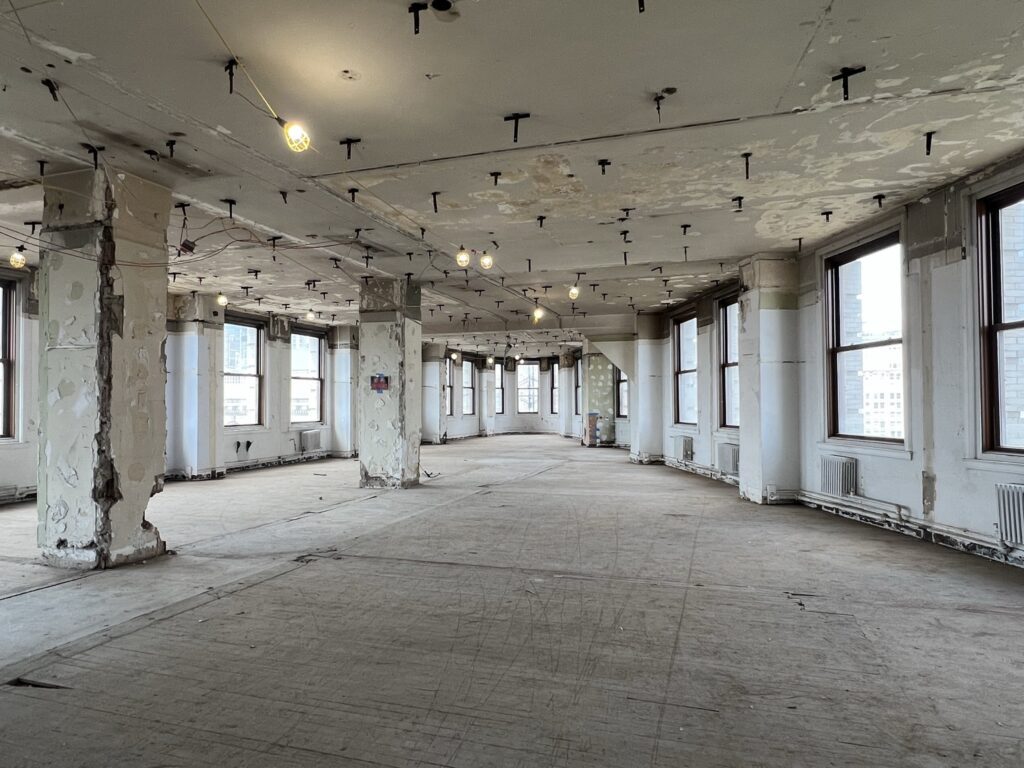
Structural Features
The Flatiron Building’s steel frame, designed by structural engineering firm Purdy and Henderson, was a marvel of its time. The frame was designed to withstand four times the maximum wind force expected in the area, ensuring the building’s stability despite its slender shape.
The foundation extends 35 feet (10.7 meters) deep, resting on solid bedrock. A series of steel columns and beams form the building’s skeleton, with terracotta arches spanning between the horizontal girders. This innovative design allowed for open floor plans and ample natural light, which was a departure from the more compartmentalized layouts of earlier buildings.
The Flatiron Building’s design influenced the construction of other triangular-shaped buildings around the world, such as the Fiat Tower in Buenos Aires, Argentina, and the Phelan Building in San Francisco, California. However, its unique combination of a steel skeleton and Beaux-Arts facade set it apart from many of its contemporaries.
In comparison to other early skyscrapers in New York City, like the Singer Building (completed in 1908), the Flatiron Building’s design was more akin to the Chicago School of architecture. Its facade was divided into distinct sections, and its shape emphasized verticality, whereas many other skyscrapers of the time featured a more traditional base-shaft-capital configuration.
Cultural Impact and Legacy
Iconic Status and Popularity
The Flatiron Building has long been considered one of the most iconic buildings in New York City, and its unique shape has made it an instantly recognizable symbol of the city. It has been featured in countless movies, television shows, and works of art, cementing its place in popular culture.
According to a survey conducted in 2023, the Flatiron Building was ranked as the fourth most-loved building in the United States, behind only Fallingwater, the Empire State Building, and the Coit Tower. Its enduring popularity is a testament to its architectural and cultural significance.
Table of Contents
From the moment of its completion, the Flatiron Building has been a favorite subject for photographers and artists. Alfred Stieglitz’s 1903 photograph of the building, taken during a snowstorm, is considered one of the most iconic images of the structure. Edward Steichen also captured the building’s essence in his 1904 photograph, which paid homage to Stieglitz’s earlier work.
Painters and illustrators have also been drawn to the Flatiron Building’s unique charm. John Sloan, Childe Hassam, and Albert Gleizes are just a few of the artists who have immortalized the building on canvas, contributing to its enduring legacy.
“23 Skidoo” and Wind Gusts
The Flatiron Building’s triangular shape and its location at the intersection of Fifth Avenue and Broadway created a unique wind tunnel effect, which led to the popularization of the phrase “23 skidoo.” In the early years of the building’s existence, men would gather around the corner of 23rd Street to catch glimpses of women’s skirts being lifted by the strong gusts of wind. Police officers would disperse these crowds by shouting “23 skidoo,” which eventually became a popular slang term meaning “to leave quickly.”
The wind gusts around the Flatiron Building also contributed to some urban legends and exaggerated tales. Some claimed that the winds were strong enough to lift people off the ground, while others believed that the building itself might be blown over. Despite these stories, the building’s sturdy construction and wind bracing have allowed it to stand strong for over a century.
Preservation and Landmark Status
Recognizing the Flatiron Building’s architectural and historical significance, the New York City Landmarks Preservation Commission designated it as a city landmark in 1966. In 1979, the building was added to the National Register of Historic Places, and in 1989, it was designated as a National Historic Landmark.
These designations have helped protect the Flatiron Building from significant alterations and ensure that its unique character is preserved for future generations.
Neighborhood and City Impact
The Flatiron Building’s construction played a significant role in the development of the surrounding neighborhood, which came to be known as the Flatiron District. The building’s presence attracted other businesses and helped establish the area as a thriving commercial hub in the early 20th century.
As the neighborhood evolved over the years, the Flatiron Building remained a constant presence, anchoring the district and providing a sense of history and continuity. Its iconic status has also contributed to the broader identity of New York City, serving as a symbol of the city’s architectural heritage and innovation.
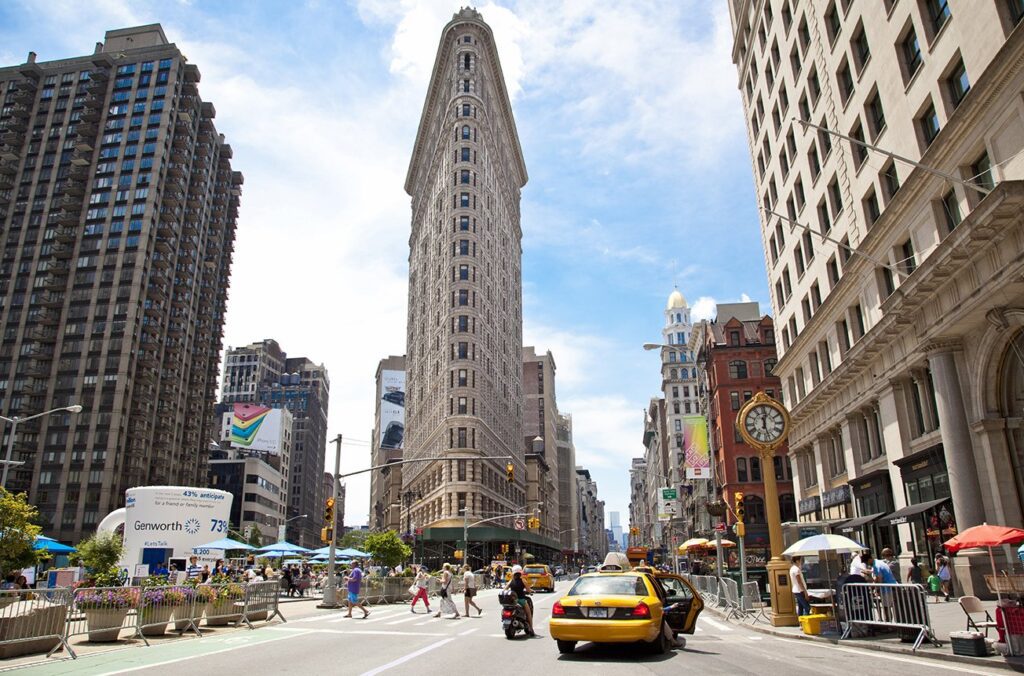
Current Status and Future
Ownership and Management
As of 2023, the Flatiron Building is owned by a group of investors, including GFP Real Estate, Newmark, ABS Real Estate, and The Brodsky Organization. The ownership of the building has been divided among several companies, which have collaborated on ongoing renovation and preservation efforts.
The building’s unique ownership structure, known as a tenancy-in-common, has presented some challenges in the past, as all co-owners must agree on any major decisions related to the property.
Throughout its history, the Flatiron Building has been home to a diverse array of tenants, from the Fuller Company in its early years to various publishing companies in more recent times. Macmillan and its imprints have been among the most prominent tenants in the 21st century, occupying a significant portion of the building’s office space.
As of 2023, the building is undergoing a major renovation project, which has temporarily left many of its floors vacant. However, the owners are actively seeking new tenants and are optimistic about the building’s future occupancy.
Ongoing Renovations and Improvements
The current renovation project, which began in 2019, aims to modernize the Flatiron Building while preserving its historical character. The $60-80 million project includes upgrading the building’s mechanical systems, installing a central air conditioning and heating system, updating the sprinkler system, and renovating the lobby.
These improvements are expected to make the building more attractive to potential tenants and ensure its long-term sustainability.
As a designated New York City Landmark and a National Historic Landmark, the Flatiron Building is subject to strict preservation guidelines. Any renovations or alterations must be approved by the Landmarks Preservation Commission and must be consistent with the building’s historical character.
Balancing the need for modern upgrades with the desire to maintain the building’s architectural integrity can be a challenge. However, the current owners have expressed a commitment to preserving the Flatiron Building’s unique features while ensuring its continued viability as a commercial property.
Future Prospects and Potential Developments
Looking ahead, the Flatiron Building’s future appears bright. The ongoing renovation project is expected to attract new tenants and ensure the building’s long-term sustainability. The owners have also explored the possibility of converting some or all of the building’s office space into residential units, although no definitive plans have been announced as of 2023.
The building’s iconic status and its location in the heart of Manhattan are likely to continue attracting interest from businesses and investors alike. As the Flatiron District continues to evolve and thrive, the Flatiron Building | A New York City Landmark will undoubtedly remain a beloved and integral part of the city’s landscape.
Conclusion
The Flatiron Building stands as a testament to the innovation, creativity, and resilience that define New York City. From its groundbreaking design to its lasting impact on the city’s culture, this iconic structure has earned its place as one of the most beloved landmarks in the Big Apple.
As the Flatiron Building enters its second century, it remains an integral part of New York City’s landscape. With ongoing efforts to preserve and enhance this remarkable structure, it is poised to continue inspiring and captivating visitors and locals alike for generations to come.
The next time you find yourself in the heart of Manhattan, take a moment to appreciate the Flatiron Building and all that it represents. This architectural marvel is more than just a building; it is a symbol of the city’s enduring spirit and a testament to the power of great design.


